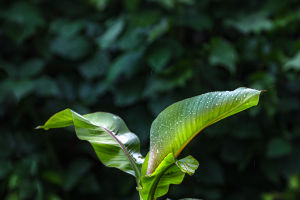Do you want to dress up your life with a bit of green? Do you want plants that don't take time, don't take effort, and live well on their own? Then try the succulent, which is known as the "most adorable plant ever".
The world's oldest document on succulents is the English translation of the book 'An Inquiry into the Functions', originally written by the Greek naturalist Theophrastus between 300-400 BC, in the British Royal Botanic Gardens Library.
The book described the succulent plant Euphorbiaceae, which was originally translated as follows: "The wood of Christrosia; a thorny plant with leaves and roots, each branch clothed with a sharp second, the branches and leaves bruised with a large amount of emulsion, which is similar to the milk of humans and other animals".
Around 1000 A.D., the name keiki was mentioned in the book "Guihai zhi zhi", written by Fan Dacheng (called Shihu jushi) in the Song Dynasty, the earliest document in the East.
Later, in the seventeenth century, Richard Bennett, a professor of botany at Cambridge University in England, mentioned the name of the tree as the earliest document in the East. In 1716, Richard Benatley (1662-1742), a professor of botany at Cambridge University, completed a five-volume work entitled 'History of Succulent Plants', which established the word Succulent.
There are three relatively important factors in the cultivation of succulents: ultraviolet light, temperature difference, and moisture.
1. UV Light
Most succulents need plenty of sunlight, and this sunlight should not be through glass or screens, as glass and screens block a large part of the UV spectrum.
However, it is not a case of blindly receiving unshaded sunlight, but of receiving as much unshaded sunlight as possible for as long as possible during the spring and autumn growing seasons when surface temperatures range from 3 to 30 degrees Celsius.
Succulents grown in areas with sufficient UV light will have fatter leaves, while insufficient UV light will result in longer stems and thinner leaves.
Temperature Difference
To have colorful succulents, you need a temperature difference in addition to sufficient UV exposure. Without a temperature difference, even strong UV rays will not allow succulents to shed their grey-green skins.
Succulents show more color when the temperature difference between day and night is greater than 15 degrees Celsius. This is the reason why succulents are more beautiful outdoors than indoors, and more hydrated in spring and autumn than in winter and summer.
In summer when it is over thirty degrees most succulents need to be moved to a cooler place, and in winter when it is below three degrees it is best not to get a cold breeze and take them indoors where the light is best.
Moisture
The secret to fattening succulents is one - get thirsty for a little while and then feed them all at once. Watering must be thorough, and water again when the soil is dry and the pot is light. Watering thoroughly is the only way to allow the roots to absorb the water.
A few drops in the next couple of days will not only not feed the roots, but the soil will also be susceptible to any kind of fungus due to prolonged wetness.
Succulents are very uncomfortable with water, and keeping the soil wet for long periods of time will also deprive the roots of oxygen, which can lead to plant stop growth or death. So keep your watering hands to yourself.
In spring and autumn, water at dusk (when the temperature is low but not too low to allow evaporation of water without putting the roots in a sauna) and water thoroughly; in summer and winter, just drip along the edge of the pot twice every three weeks to maintain the minimum amount of water needed to survive.


